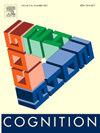地点相关表征为共情搭建舞台
IF 2.8
1区 心理学
Q1 PSYCHOLOGY, EXPERIMENTAL
引用次数: 0
摘要
是什么让人们体验到不同程度的同理心?常见的说法强调人际属性,包括受害者的群体成员或与观察者的社会接近度。在这里,我们阐明了一个独特的过程:想象受害者周围的场景。尽管想象力已被证明可以调节共情,但其代表性成分的相对重要性尚不清楚。使用fMRI (N = 48),我们分别确定了与想象地点和人物相关的激活图。当参与者想象不幸发生在特定地点的个人身上时,地点和人物地图共同预测了情感同理心,以及亲社会行为(不太一致)。至关重要的是,地点优先激活至少与人优先激活一样具有预测性。结果在几个组、参与者、试验水平和协变量调整分析中都是稳健的。此外,地点偏好激活本身最能被人的喜好所预测,而不是与地点相关的评级。我们的数据与社会亲和力增强地方想象力的观点是一致的,而地方想象力反过来又增加了同理心,超越了人的想象力。这些发现挑战了以人为中心的共情观点,表明地点相关表征是共情和社会偶然的核心。本文章由计算机程序翻译,如有差异,请以英文原文为准。
Place-related representations in setting the stage for empathy
What makes people experience varying degrees of empathy? Common accounts emphasize interpersonal attributes, including victims' group membership or social proximity to observers. Here we elucidate a distinct process: imagining the scenes surrounding victims. Although imagination has been shown to moderate empathy, the relative importance of its representational components is unknown. Using fMRI (N = 48), we identified activation maps preferentially associated with imagining places and persons, respectively. When participants imagined misfortunes happening to individuals in specific places, the place and person maps jointly predicted affective empathy, and, less consistently, prosocial behavior. Crucially, place-preferential activation was at least as predictive as person-preferential activation. Results were robust to several group-, participant-, trial-level, and covariate-adjusted analyses. Moreover, place-preferential activation itself was most strongly predicted by person liking, beyond place-related ratings. Our data are consistent with social affinity potentiating place imagination, which in turn increases empathy, above and beyond person imagination. These findings challenge person-centric views of empathy by suggesting that place-related representations are central to empathy and socially contingent.
求助全文
通过发布文献求助,成功后即可免费获取论文全文。
去求助
来源期刊

Cognition
PSYCHOLOGY, EXPERIMENTAL-
CiteScore
6.40
自引率
5.90%
发文量
283
期刊介绍:
Cognition is an international journal that publishes theoretical and experimental papers on the study of the mind. It covers a wide variety of subjects concerning all the different aspects of cognition, ranging from biological and experimental studies to formal analysis. Contributions from the fields of psychology, neuroscience, linguistics, computer science, mathematics, ethology and philosophy are welcome in this journal provided that they have some bearing on the functioning of the mind. In addition, the journal serves as a forum for discussion of social and political aspects of cognitive science.
 求助内容:
求助内容: 应助结果提醒方式:
应助结果提醒方式:


